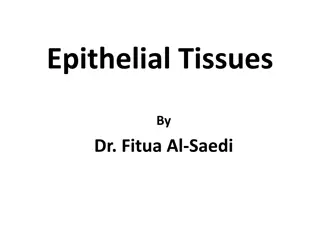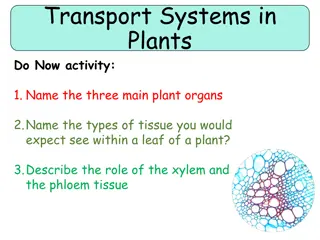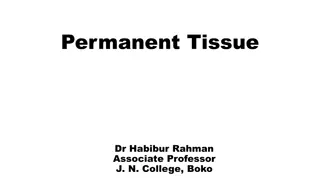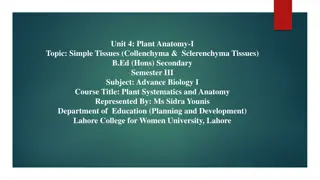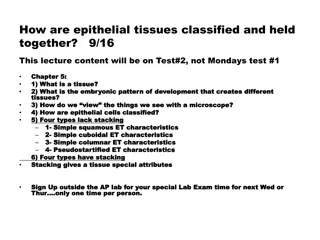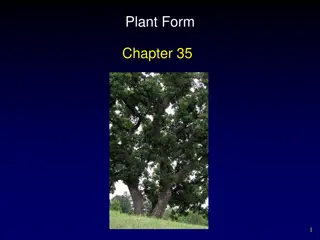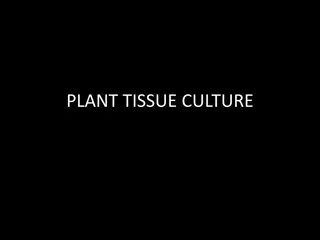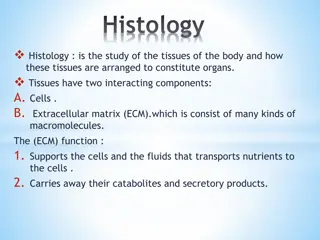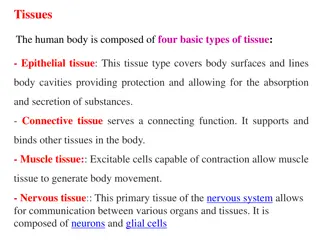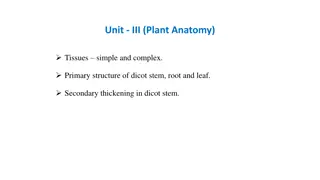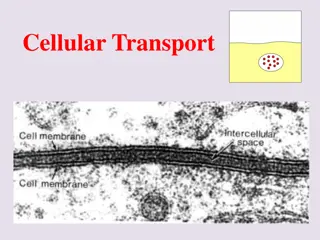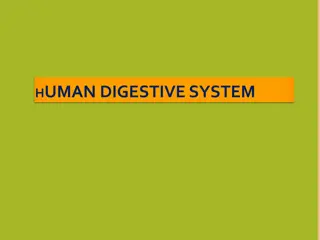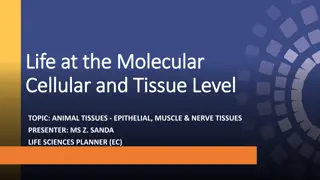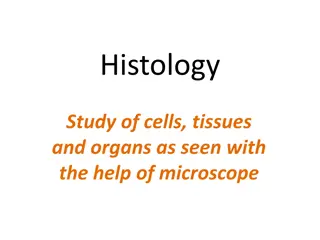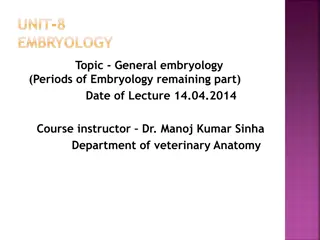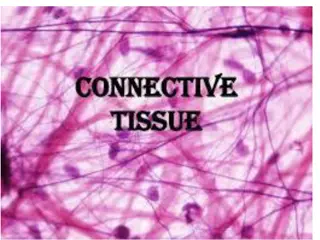Plant Tissues and Organs: Understanding the Structure and Function
Explore the world of plant tissues and organs, learn about their functions, differences between cells, tissues, and organs, and discover how plants survive and obtain essential raw materials for growth. Dive into the roles of leaves, stems, and roots in plant physiology, and enhance your understanding of photosynthesis, water absorption, and mineral ion uptake. Engage in activities, assessments, and a video analysis to deepen your knowledge of plant structure and function.
Download Presentation

Please find below an Image/Link to download the presentation.
The content on the website is provided AS IS for your information and personal use only. It may not be sold, licensed, or shared on other websites without obtaining consent from the author. Download presentation by click this link. If you encounter any issues during the download, it is possible that the publisher has removed the file from their server.
E N D
Presentation Transcript
Plant Tissues & Organs Do Now activity: 1.Can you name any plant organs or tissues? 2.What is the difference between a cell, tissue and an organ? Key Words Adaptation Tissue Organ Cell Plant Structure Function 3.What do plants need to survive? How do they obtain these raw materials?
Progress indicators GOOD PROGRESS: - Identify different tissues and organs in plants and state their functions - Explain the functions of the different cells in a leaf; identify the different cells found in the leaf. OUTSTANDING PROGRESS: - Critically evaluate the structure of different cells related to their function.
Plant organs Leaves Stem Roots
Organ function:Match the organ to the correct function: Organ Function Leaves Roots This structure is needed to support the leaves and the flowers of the plant This structure is the site of photosynthesis in the plant Stem This structure is needed for the absorption of water and mineral ions from the soil
Organ Function This structure is the site of photosynthesis in the plant Leaves Roots This structure is needed for the absorption of water and mineral ions from the soil This structure is needed to support the leaves and the flowers of the plant Stem Self-assessment
Task: Watch the video and answer the following questions: 1. Where does most photosynthesis take place? 2. Which part of the leaf receives the most light? 3. Why is a large surface area useful? 4. What are the pores on the underside of the leaf called? 5. What enters through the stomata? 6. Where does water enter the plant? 7. What does the epidermis do? https://www.youtube.com/watch?v=co0JdqUlycg
Plant tissues Mesophyll Epidermis Xylem & Phloem
Task: Add the labels and information to your diagram using the information sheet Cross section of a leaf 1. 2. 3. 4. 5. Structure: Stomata Function: Controlled by the guard cells, these pores allow gases and water to move in and out of the leaf
Why are plants so important? Energy for living things Photosynthesis uses energy, the energy usually comes from the sun in the form of electromagnetic radiation. The plant absorbs the energy and stores it within glucose molecules. This is where all of your energy comes from, it comes from the food that you eat that originally is traced back to plants.
Exam-style question: 1. Explain how the following cells are vital for a plant to carry out photosynthesis: a) Guard cells (2 marks) b) Palisade cells (2 marks) Self-assessment: a) Guard cells: control the movement of gases in and out of the cell (e.g. carbon dioxide into the plant, water vapour & oxygen out of the plant), carbon dioxide is a raw material of photosynthesis b) Palisade cells contain a large number of chloroplasts, which contain chlorophyll to absorb light energy needed for photosynthesis to occur
Plenary: 3-2-1 3 Facts 2 Key words 1 Question
Epidermal tissue Epidermal tissue Palisade mesophyll Palisade mesophyll Spongy mesophyll Spongy mesophyll Xylem & Phloem Xylem & Phloem Epidermal tissues cover the surface and protect them. These cells often secrete a waxy substance that waterproofs the surface of the leaf. Epidermal tissues cover the surface and protect them. These cells often secrete a waxy substance that waterproofs the surface of the leaf. Spongy mesophyll tissue contain come chloroplasts for photosynthesis but also has big air spaces to make diffusion of gases easier. Spongy mesophyll tissue contain come chloroplasts for photosynthesis but also has big air spaces to make diffusion of gases easier. Palisade mesophyll tissue contain lots of chloroplasts, which carry out photosynthesis. Palisade mesophyll tissue contain lots of chloroplasts, which carry out photosynthesis. Xylem and phloem are the transport vessels in plants. Xylem transports water and dissolved ions from the roots to the leaves. The phloem carry dissolved food from the leaves around the plant. Xylem and phloem are the transport vessels in plants. Xylem transports water and dissolved ions from the roots to the leaves. The phloem carry dissolved food from the leaves around the plant.





